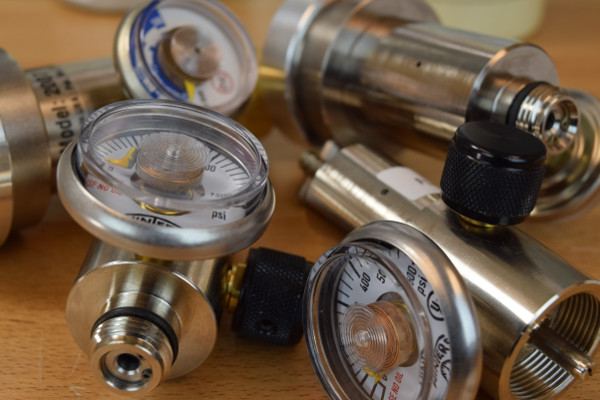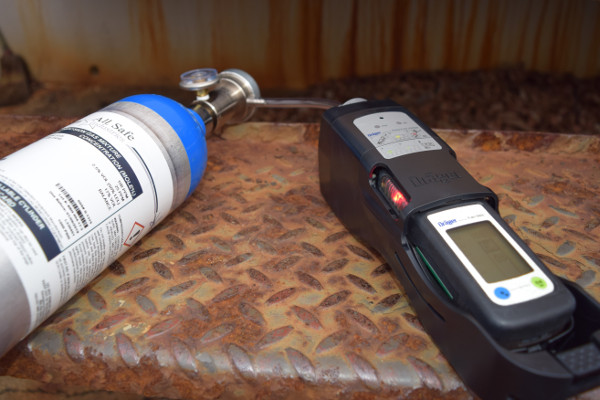 Regulators control the flow of gas from the gas cylinder to the meter.
Regulators control the flow of gas from the gas cylinder to the meter.
Using the correct regulator is essential for getting the best performance from your gas meter. The wrong regulator could bog down a pump, lead to inaccurate readings after calibration, or even be completely incompatible with your calibration cylinder.
Three variables to consider when buying a new regulator are threading, flow rate, and reactiveness of the gas in the cylinder.
1. Threading
Regulator threading is the most obvious factor in selecting a regulator. Calibration cylinders are available with two different threading systems. Larger 103L steel cylinders and all aluminum cylinders have internal threads, while the smaller 34L steel cyinders have external threads.
A regulator with external threading will simply not fit a cylinder with external threading, and vice versa. There are no conversion adapters. If you end up with an incompatible set-up, the only solution is to replace either the regulator or the gas, both costly options.
Fortunately, identifying the right regulator threading is not difficult. 34L, 58L, and all EcoSmart reusable cylinders use C-10, male threaded regulators. The 34L steel cylinder uses a CGA-600, female threaded regulator.
The only gases that can be put in a 34L steel cylinder are non-reactive gases like Methane, Isobutylene, and Carbon Monoxide. Any gas mixture containing a reactive gas, like Hydrogen Sulfide or Sulfur Dioxide, requires an aluminum cylinder.
Pro Tip: Use 105L cylinders instead of 34L for non-reactive gases. Non-reactive gases have double the shelf life of 4-gas mixes, meaning the gas is less likely to be wasted and you may share one regulator between both cylinders.
 Gas meters with attachable pumps may also be used with a demand flow regulator.
Gas meters with attachable pumps may also be used with a demand flow regulator.
2. Flow Rate
Every gas meter has a recommended flow rate for calibration and bump testing. Recommended flow rates are generally listed in the gas detector manual, but they typically fall in the 0.5 to 1.0 LPM range (click here for a list of recommended flow rates).
Using a regulator with too high of a flow rate can lead to flooded sensors and wasted gas. A regulator with too low of a flow rate, on the other hand, puts extra strain on a pump and will under-supply gas to the sensors.
Using a demand flow regulator
with pumped meters ensures that a meter is supplied only the amount of gas required.
Unlike preset flow regulators, demand flow regulators rely on pump draw to
actuate the release of gas. This not only provides the sensors with exactly the
amount of gas the pump provides but also best simulates how the meter samples
the atmosphere in a confined space.
Although initially more costly, demand flow regulators add an extra level of convenience in addition to being the most efficient way to supply gas to the sensors.
3. Reactiveness
Not all regulators are compatible with all gases. Since extra-reactive gases like Chlorine (Cl2), Ammonia (NH3), Hydrogen Chloride (HCl), and Phosphine (PH3) can corrode the internals of standard regulators, they require regulators with stainless steel internals.
Additionally, extra reactive cylinders tend to be "sticky" and can leave residues inside the regulator. It is a good idea to dedicate a regulator to each of these gases, rather than using the same regulator for multiple gases.
Helpful Hint: All demand flow regulators offered by All Safe Industries are approved for extra-reactive gases and are provided at no additional cost.
The Bottom Line
As long as you keep threading, flow rate, and gas reactiveness in mind, you should be able to avoid costly purchase mistakes and select the right regulator for your gas meter and application every time.
If you need additional help selecting the right regulator, contact us at 888-972-3389 or info@allsafeindustries.com.